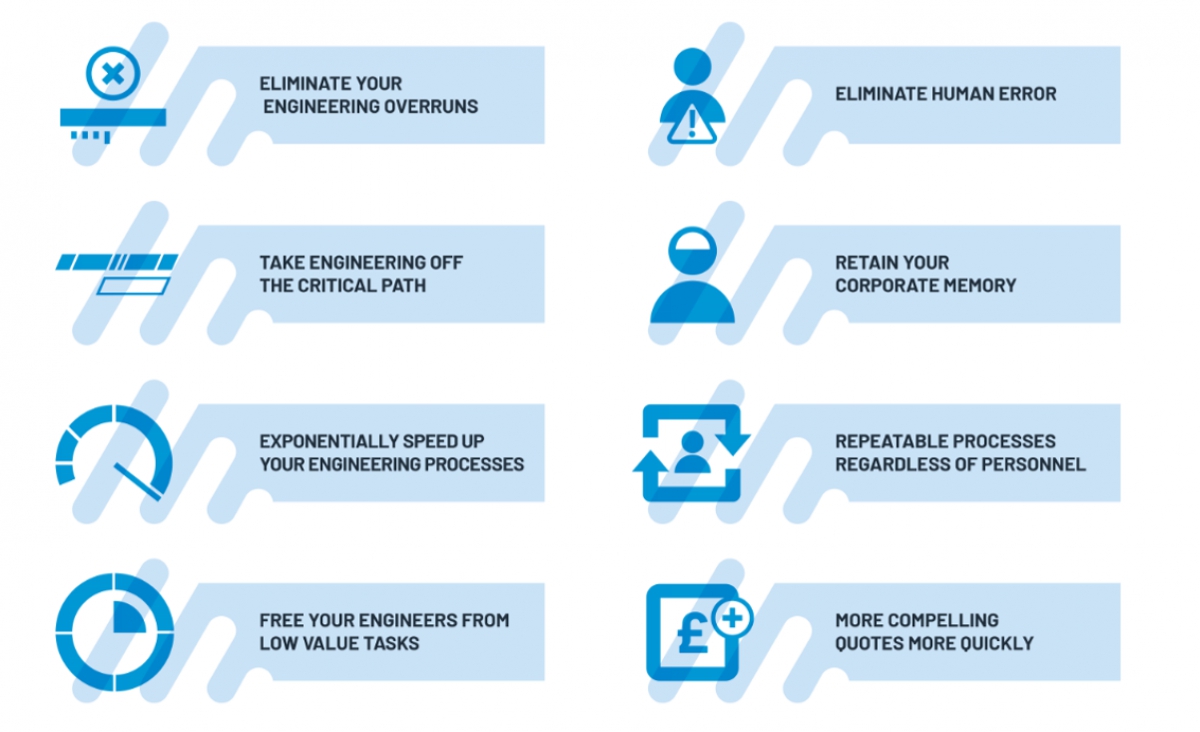The Automation of Engineering Processes to Solve the Cost of Poor Quality

Some of the key benefits of automation

In the intricate landscape of project engineering where precision is paramount, the adoption of automation is transformative for the valve and actuator industry.
Poor quality issues are rooted in the front-end engineering processes such as misaligned specifications, resource bottlenecks, human inputting errors, insufficient integration between tools/databases, inability to integrate new product lines, and senior engineers consumed by low-value and repetitive tasks rather than more meaningful work. These problems result in lead times that are too long and profits that are too low.
Over the last 10 years, the dedicated team of Engineers and Software Engineers at PDL have used their digital services expertise and experience to understand the complex engineering processes of clients to deliver bespoke solutions to simplify, integrate, and automate their engineering workflow, in order to solve the poor quality issues.
Automation provides a multifaceted approach to engineering which drives the cost of poor quality to zero.
Optimise performance and reduce cost
Using MAXIM®, their own proven software methodology, the PDL team understand and define the client’s engineering processes for sizing, configuring, pricing and quotation applications (SCPQ). By taking the time to capture all the client’s data sources to create a set of standard data and rules within a single source of truth; the optimised engineering workflow simplifies, integrates and automates the client’s engineering process to provide a consistent and validated process that mandates accuracy and exponentially speeds up the engineering process whilst providing significant gains in engineering efficiency and capacity.
Retain knowledge and reduce risk
Automation of the client’s processes removes the considerable risks of the repetition, complication and control difficulties caused by unmaintained, undocumented and uncontrolled software and multiple spreadsheets. The methodology also preserves the essential tacit knowledge that resides only in the heads of a few individuals. The critical intellectual property is harnessed, retained and distributed throughout the organisation and the corporate memory is protected, should key people be unavailable or leave the business, and is also accessible to train new recruits.
Shorten lead time
Poor communication between tendering and engineering means that engineering frequently gets done twice - once to win the work and again to deliver the work once the order lands. The automated process ensures that engineering is only done once. Hence, up to 80% of the engineering can be done prior to contract award in substantially less time, which provides more cost certainly at the bid stage and a more compelling bid. Only 20% of the engineering needs to be done after the bid lands taking engineering off the critical path. Engineers can do more engineering, in less time at a lower cost, driving the cost of poor quality towards zero and building a valuable competitive advantage.
Given the cost of the mistakes within the project engineering process, investment in process automation is essential. Embracing automation is not a technical upgrade, but rather a strategic imperative for companies looking to address the challenges of poor quality and become leaders in the pursuit of engineering excellence.
To book an initial consultation and find out how the PDL team can deliver a bespoke solution to automate your front-end engineering, please contact:
James Dobson Engineering Manager - Digital, PDL James.Dobson@pdl-group.com
Telephone: + 44 (0) 1 434 609 473
Email: solutions@pdl-group.com
Website: www.pdl-group.com

| Telephone: | 00 44 1434 609473 |
| Email: | solutions@pdl-group.com |
| Website: | www.pdl-group.com |
| More information on the PDL Solutions (Europe) Ltd BVAA Member Directory Page |
Search related valve / actuator articles: PDL Solutions (Europe) LtdIssue 90Company News







-web.jpg)





